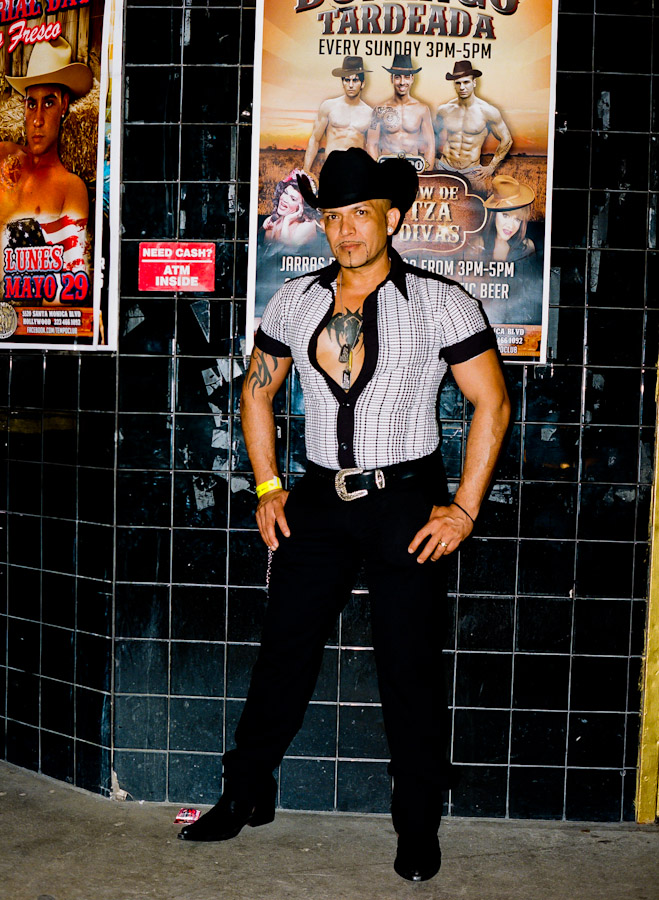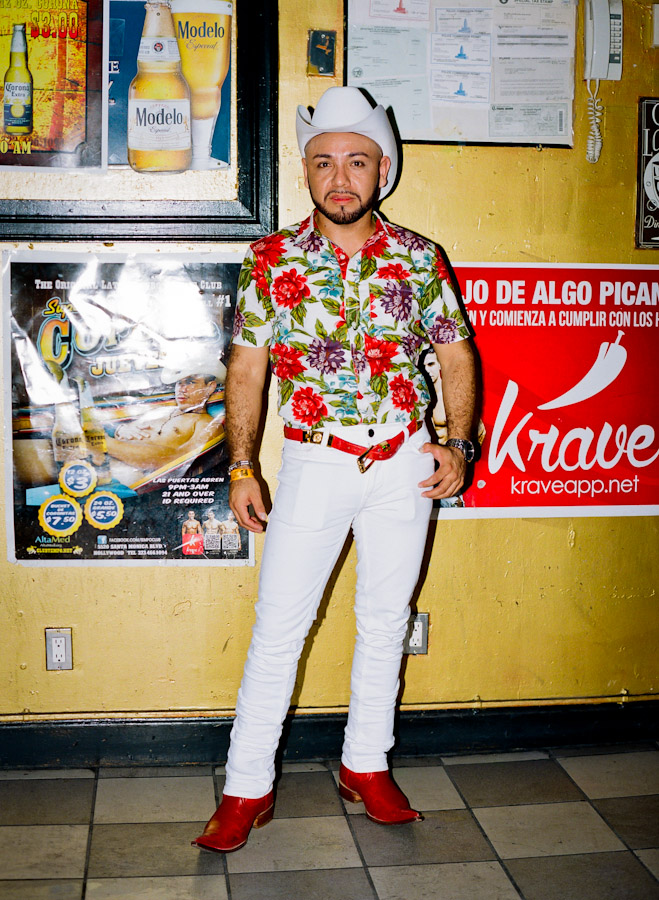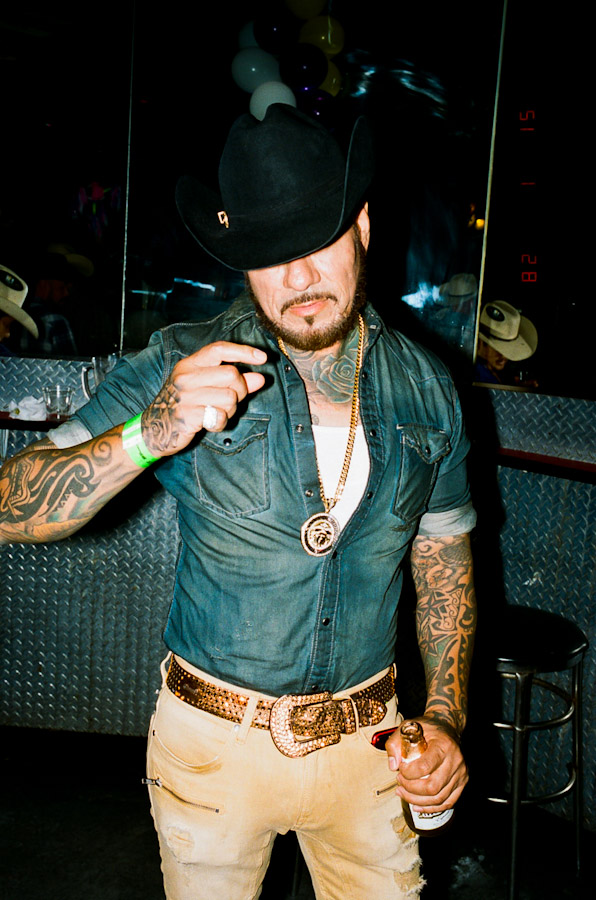A night on the town with LA’s queer Vaqueros
- Text by Miss Rosen
- Photography by Sean Maung

Santa Monica Boulevard is one of Los Angeles’ most fabled thoroughfares, running West from Silver Lake, through Hollywood and Beverly Hills all the way to Ocean Avenue, just off the Pacific.
“There are different areas on Santa Monica that have different flavours,” photographer Sean Maung, an LA native, explains. “When you say ‘Santa Monica Boulevard,’ most people think of West Hollywood, which has a very strong gay and lesbian scene. But I’ve always been really attracted to Santa Monica Boulevard in East Hollywood.”
The random mix of people from local Russian, Thai, and Latino communities appealed to Maung, who has been documenting the street culture of his hometown for over a decade. While photographing transgender prostitutes working the street late at night, Maung saw the words “Club Tempo” on an orange sign in front of a mall and thought to himself, “What’s Club Tempo? And why is it in the back of a strip mall in East Hollywood?’”
He would soon find out. He did a little research and discovered Club Tempo hosted a gay Vaquero (Spanish for “cowboy”) Night – which has been running continuously for the past 26 years. Maung dropped by and was quickly impressed. “There were all these vaqueros and they were just looking so good,” he remembers. “Their style was immaculate and there were so many colours: the boots, the belts, the shirts, and the pants. I love that contrast of being in such a modern city in 2017 and there are still cowboys hanging out. It’s not a costume – it’s a culture.”


The vaquero is a long-standing Mexican archetype, dating back to its colonial past with a distinctly Latin American spin on the culture, music, and attire of the cattle rancher. Many immigrants have a strong desire to hold on to the culture of their youth. Those who come to Vaquero Night are not only looking to meet and mingle as folks do at the club but to celebrate familiar traditions with corridos (ballads), a live mariachi band, and line dancing.
Maung started the photographing with a simple point and shoot camera, but realised he wanted to do more in-depth work. “I asked the manager if I could shoot and he asked why. I told him that this is an amazing scene and the world should see this. He was open to it. From there I went on to bring a backdrop and hung it outside the club so that before the cowboys came in, I would take their pictures. I can speak Spanish and that really helped, but I can’t hustle in Spanish so the security guards always had my back.”
Over the past year, Maung has compiled a body of work that captures the style, pride, and flamboyance of the vaqueros of Santa Monica Boulevard. “People were very open,” he reveals. “They are an integral part of L.A. life.”









See more of Sean Maung’s work on his official website.
Follow Miss Rosen on Twitter.
Enjoyed this article? Like Huck on Facebook or follow us on Twitter.
You might like

“Humanity’s big threat is our disconnect from nature”: Craig Richards and Chris Levine in conversation
Lighting up — With Houghton Festival collaborating with artist Chris Levine in its most recent edition, we sat down with the light artist and the festival’s creative director Craig Richards to chat about their new installations, and the role of art and music in tumultuous times.
Written by: Isaac Muk

Three heart wrenching poems from Gaza
Writings that narrate — With Gaza’s population facing starvation, we are handing over our website to Yahya Alhamarna, a displaced poet and student in Gaza, who shares some of his recent poetry, and explains why writing is so important to him.
Written by: Yahya Alhamarna

Throwback portraits of the UK’s first punks
Punks 1978-1980 — While working as a photographer in the army, Wayne “Spike” Large would moonlight as a punk on the weekends. His new photobook revisits the characters that he captured from the genre’s heyday.
Written by: Miss Rosen

Meet Lady Pink, the ‘First Lady’ of graffiti
Miss Subway NYC — As a leading writer and artist in a man’s world, Sandra Fabara has long been a trailblazer for girls in underground art. Now, her new show touches on her legacy, while looking to the future.
Written by: Isaac Muk

As Grindr scams in India rise, its LGBTQ+ community fights back
Red flags — Through mobilising the threat of outing queer folk, scammers are using dating apps to find targets for extortion, violence and blackmail. Mansi Rathee and Amir Bin Rafi spoke to people who have been affected, and reported on the community’s work to support victims and raise awareness.
Written by: Mansi Rathee

The Tossers: Inside the world of competitive egg throwing
The Obsessives — From Russian Egg Roulette to the showpiece Throw and Catch, the World Egg Throwing Championships is a cracking tournament. Ginnia Cheng joined this year’s edition, and scrambled to keep up.
Written by: Ginnia Cheng

